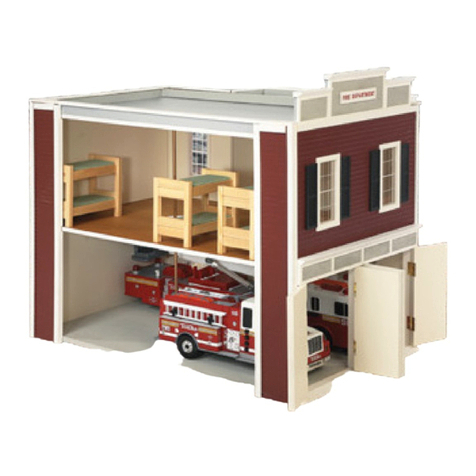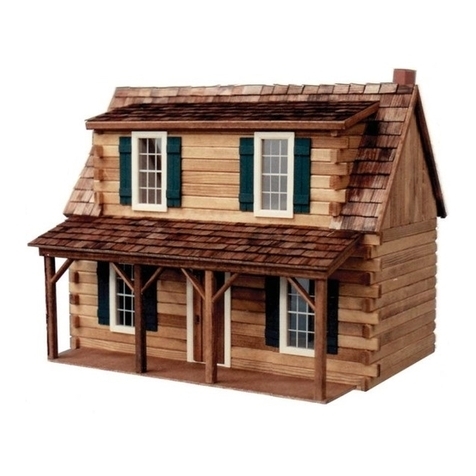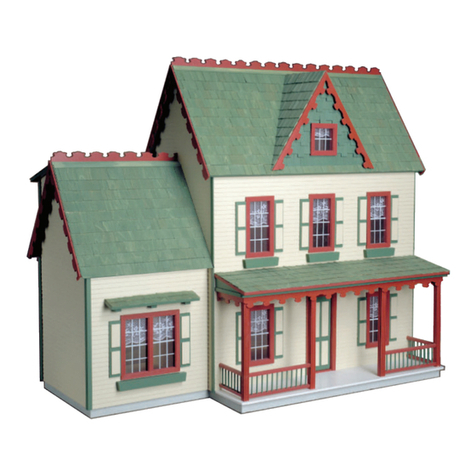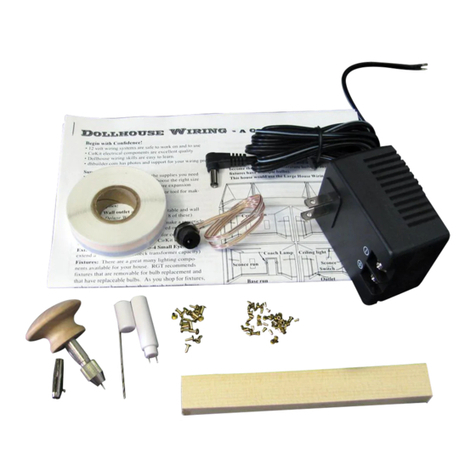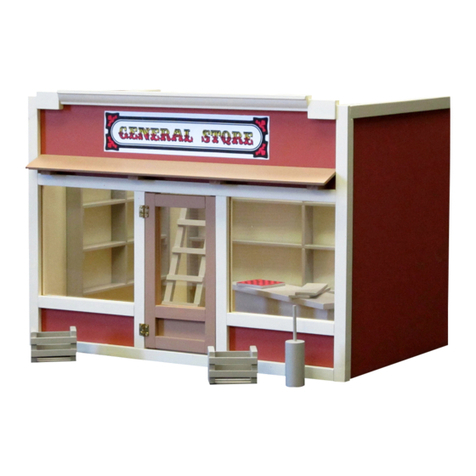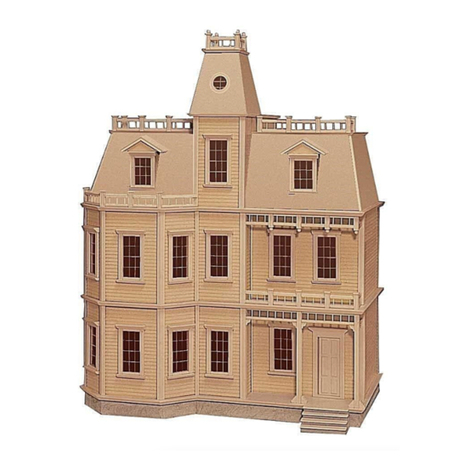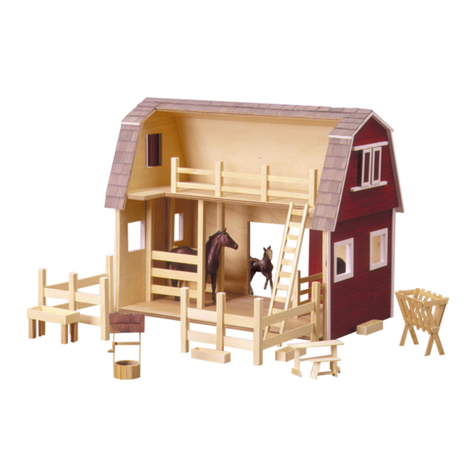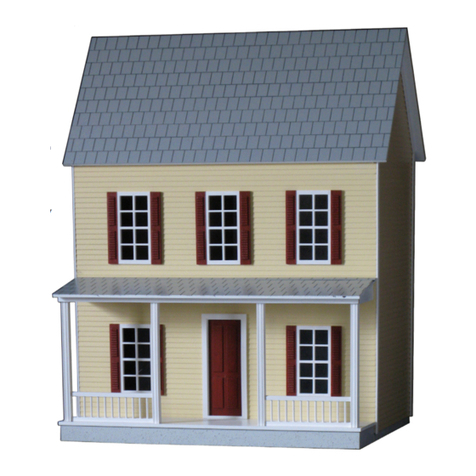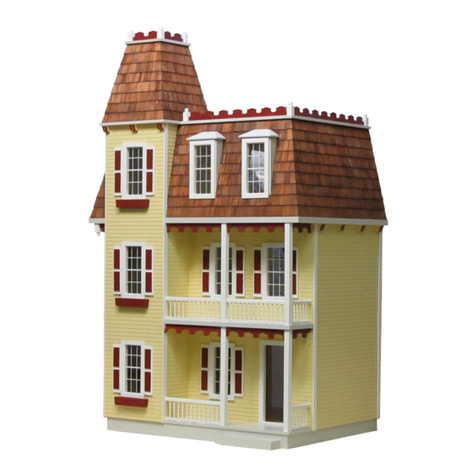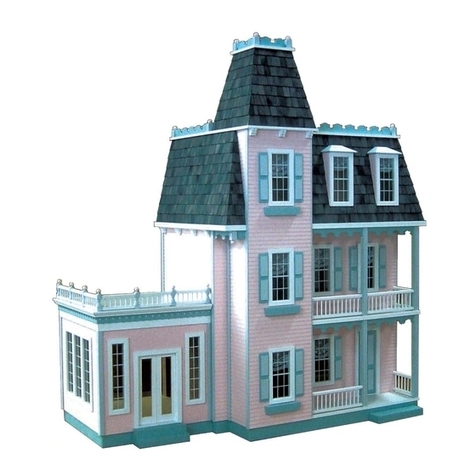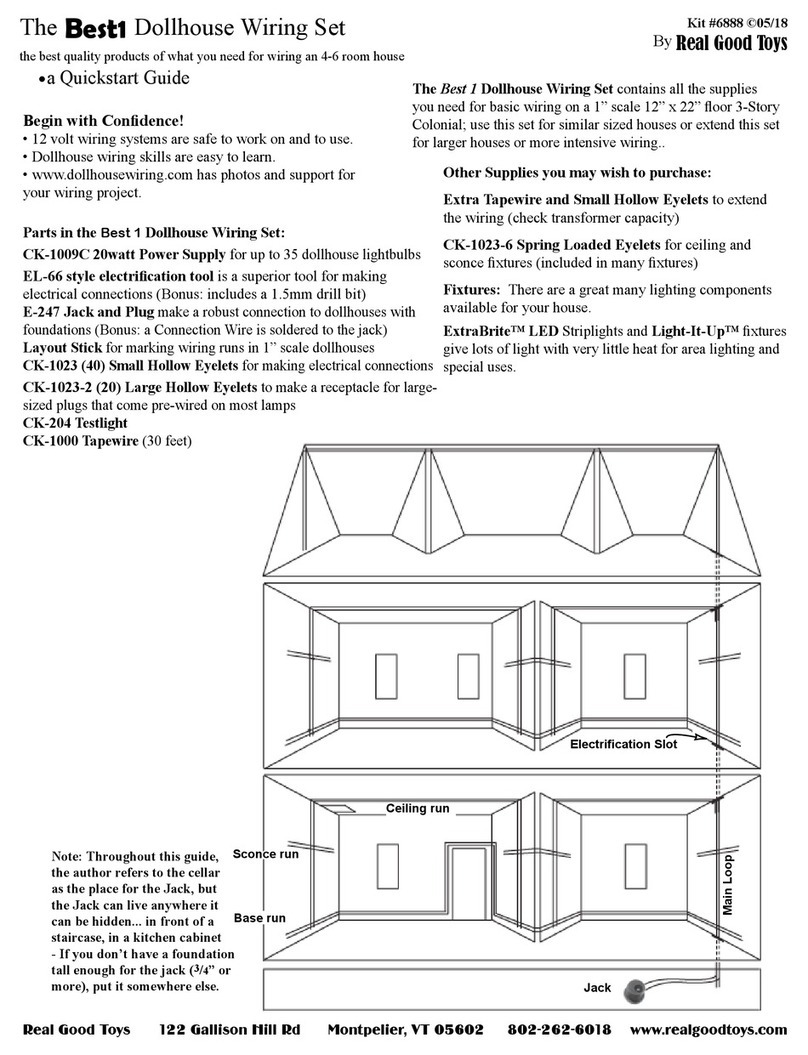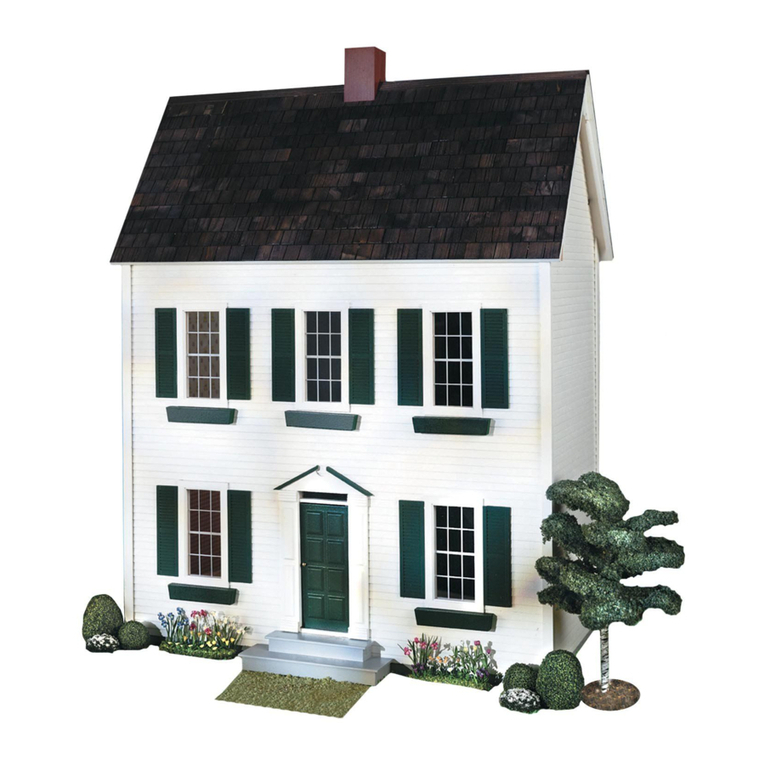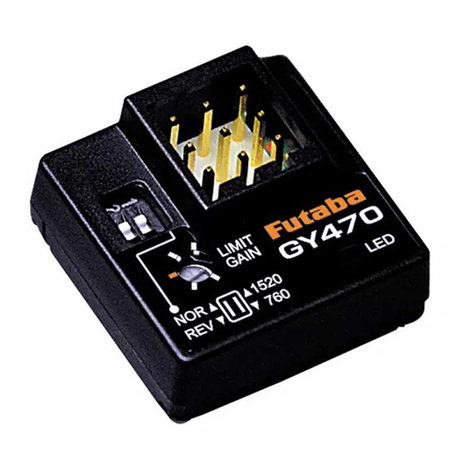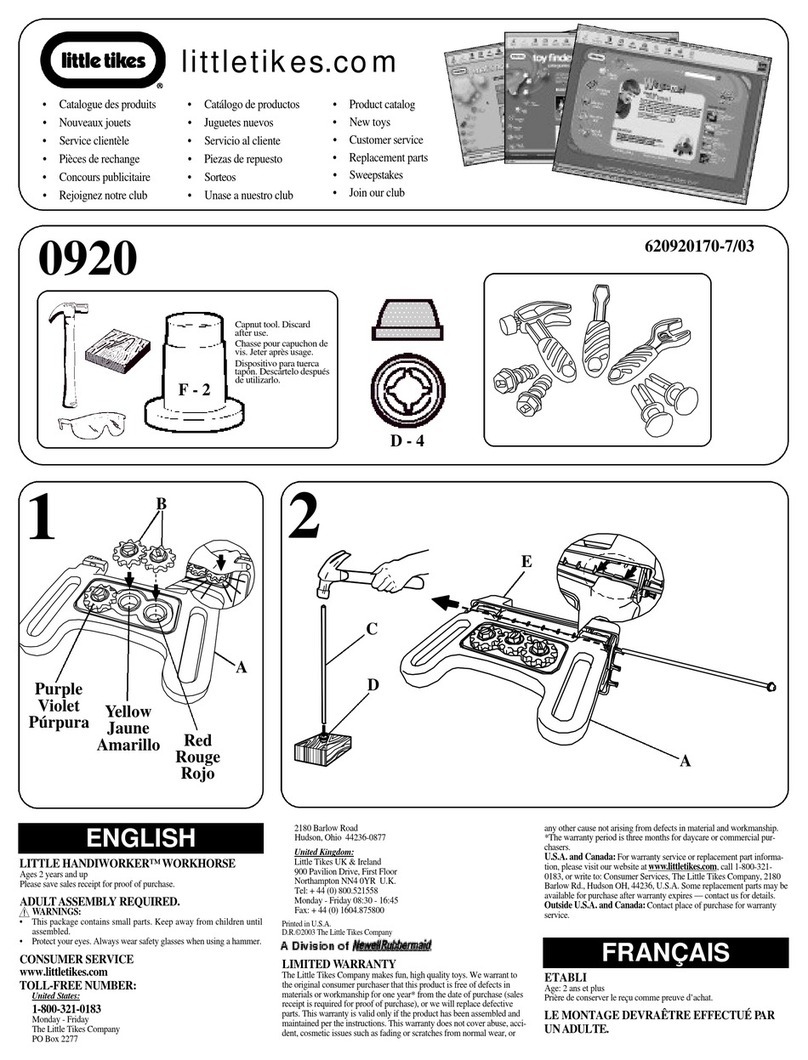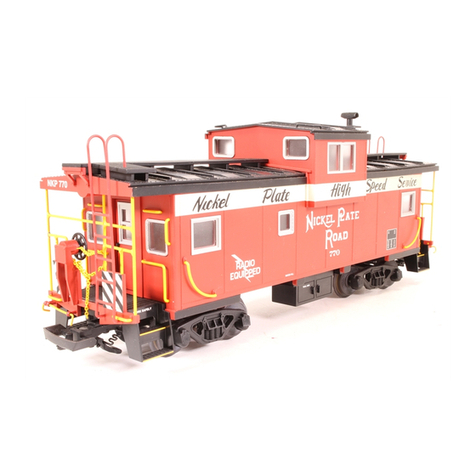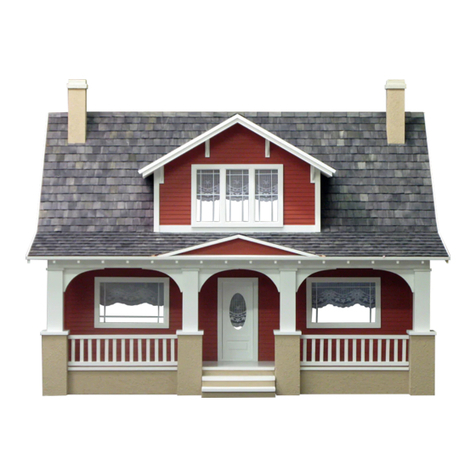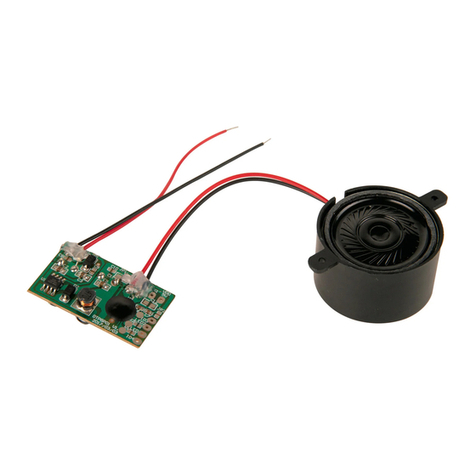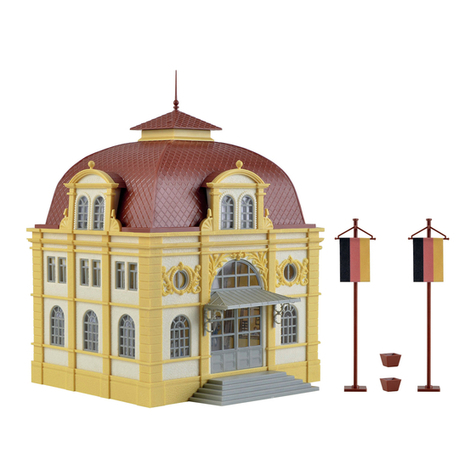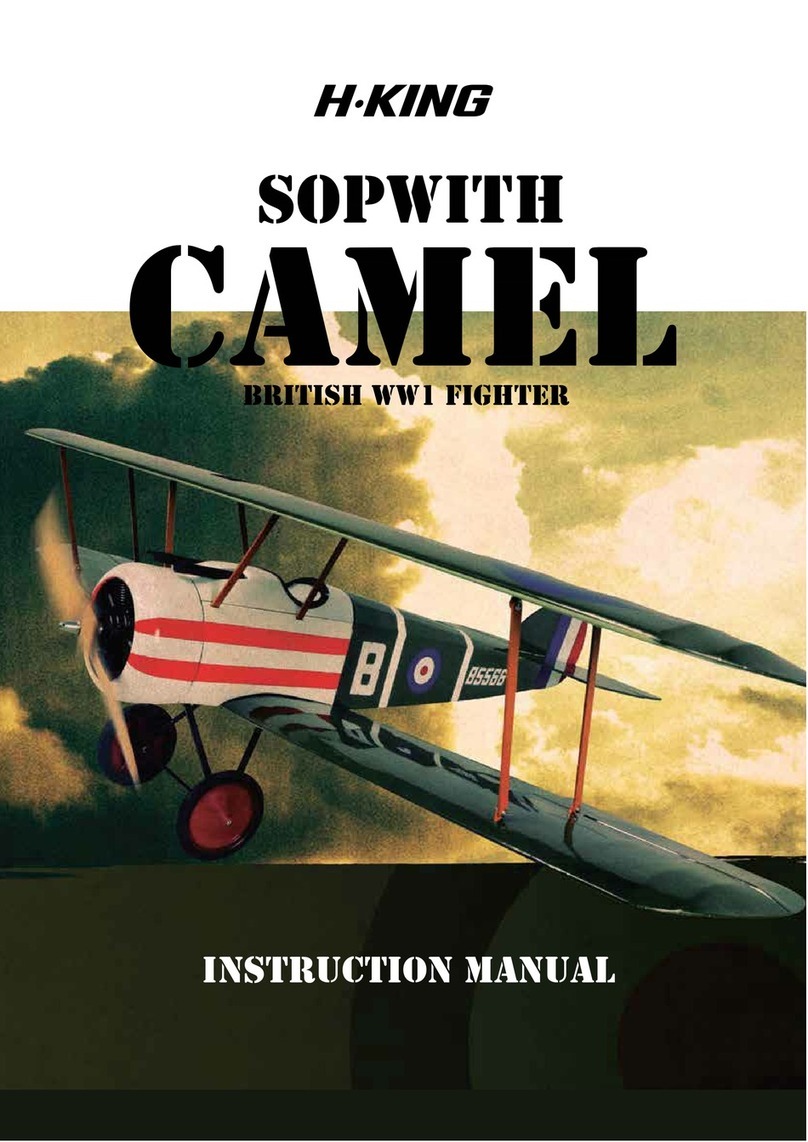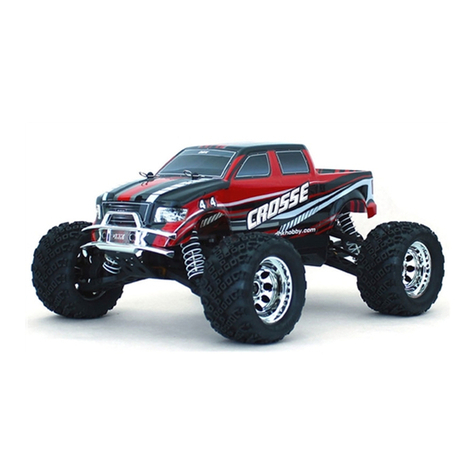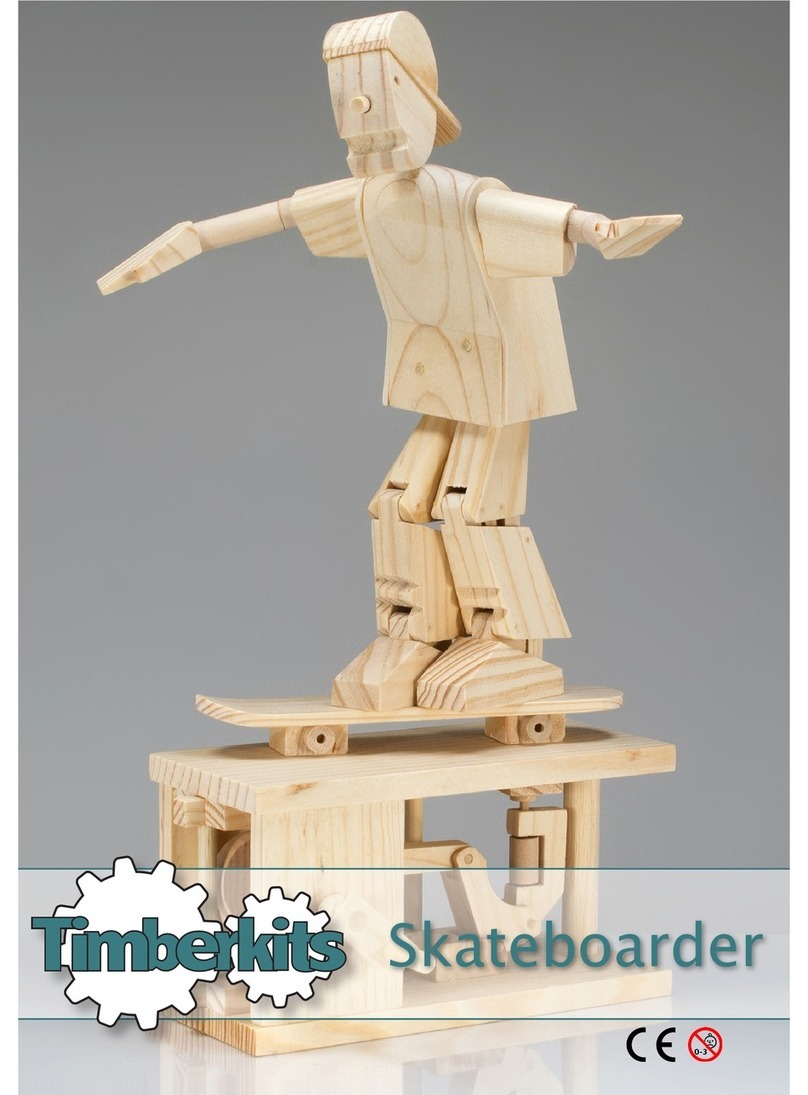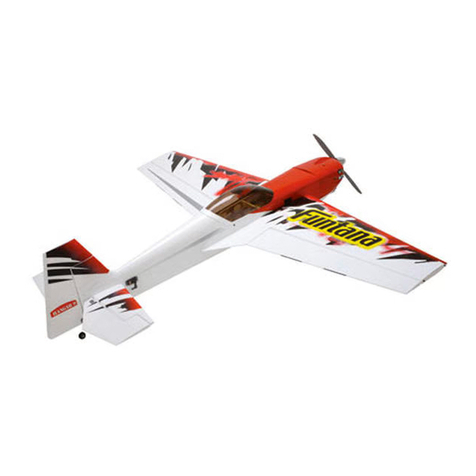
My Dreamhouse Instructions - Paint page 3
Paint the parts
the first coat. The first coat mostly soaks
the first coat. The first coat mostly soaks
into the wood, filling and reinforcing the grain so the sanding
into the wood, filling and reinforcing the grain so the sanding
step clips off the fibers and leaves the surface smooth. Resist
step clips off the fibers and leaves the surface smooth. Resist
sanding before painting - it will leave the surface fuzzy and
sanding before painting - it will leave the surface fuzzy and
make a smooth finish harder to achieve. The quality of your
make a smooth finish harder to achieve. The quality of your
final finish is dependent on the quality of the sanding after the
final finish is dependent on the quality of the sanding after the
first coat. Do not go back to re-paint just because the paint has
first coat. Do not go back to re-paint just because the paint has
soaked in. Just a bit of paint left on the surface tells you you
soaked in. Just a bit of paint left on the surface tells you you
have put on enough to saturate the grain, which is the right
have put on enough to saturate the grain, which is the right
amount. More paint than that will only make sanding harder.
amount. More paint than that will only make sanding harder.
Glue doesn’t stick to paint.
Glue doesn’t stick to paint.
Avoid painting edges, grooves,
Avoid painting edges, grooves,
and areas that will be glued.
and areas that will be glued.
Do not stack painted parts - even when they feel dry
they will stick and damage each other. Keep them
spread out or separate them with waxed paper.
A word about primer: Primer is designed to help paint stick
to an impervious surface or to join layers of dissimilar paints.
In this application, the first coat of paint soaks right into the
wood and fills the grain - you could do that with primer, but its
job of being an interface between different materials doesn’t
apply here. In this application, primer just adds steps and ex-
pense. I don’t use it here and don’t recommend it.
Paint the Back and Sides on both faces. Paint the Floor on one face
(consider a ‘faux-wood’finish on the floor... see Youtube gpr01010).
Paint the Ceiling Liner on one face.
Paint the Trim on one face and both edges.
Paint the second coat. The Second coat for the outside of the
Walls may be done after assembly of the housebody (that’s
what I do). The second coat goes on smooth and creamy with
enough paint on the brush so it is quiet while you are brushing
the paint out, but not enough to leave puddles or drips.
Sand everything
. Sand until the paint is smooth and “soft”
. Sand until the paint is smooth and “soft”
feeling, transparent, and some of the wood is showing through.
feeling, transparent, and some of the wood is showing through.
Sand the Clapboard one-clapboard-surface-at-a-time. Fold
Sand the Clapboard one-clapboard-surface-at-a-time. Fold
the sandpaper and sand back and forth until the surface of that
the sandpaper and sand back and forth until the surface of that
board is smooth and transparent; then move on to the next
board is smooth and transparent; then move on to the next
board. Fold the sandpaper as needed to keep it fresh.
board. Fold the sandpaper as needed to keep it fresh.
Cleaning an edge with the
back of a utility knife blade
Cleaning a groove with a Cabinet Scraper
Cleaning a groove with a Cabinet Scraper
Clean the edges and grooves
Clean the edges and grooves
before assembly. A little paint always
before assembly. A little paint always
builds-out the corner of an edge or groove and will make assembly
builds-out the corner of an edge or groove and will make assembly
harder and the glue joint less strong. Test the Floor, Liner, and Back
harder and the glue joint less strong. Test the Floor, Liner, and Back
in their grooves to see that they fit well.
in their grooves to see that they fit well.
